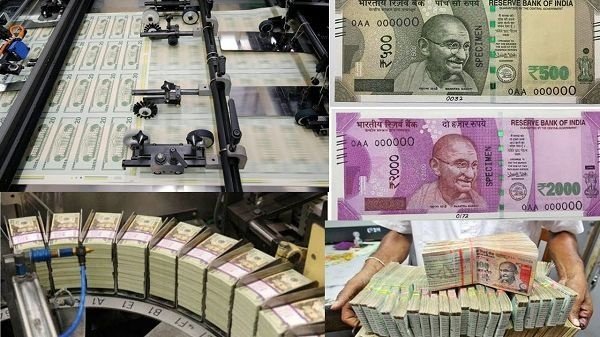Why doesn’t RBI print unaccounted money and give it to the poor? While on one hand the budget is presented by the central and state governments, on the other hand it is the RBI that decides how and where the currency will be circulated. There are a few selected places in the country where printing of notes takes place and paper is made in one part of the country, ink is made somewhere else and its security is done at some other place.
Today we are going to give some information about the printing of notes till their last journey.
How RBI decides how many notes will be printed?
RBI decides how many notes will be printed within a year on the basis of growth rate, inflation rate and inflation. After looking at this, it is seen how many notes are currently in circulation, how many notes may be mutilated which will need to be replaced and then what is the public demand, like more notes were printed at the time of demonetization. Along with this, the amount of foreign reserve to be kept is decided with the Finance Ministry and then the notes are printed.
‘Minimum Reserve System‘ is being followed in India since 1956 for printing of notes. Under which RBI always has to keep a reserve of Rs 200 crore or more in its treasury for printing of notes. This is so that in case of any need, the circulation of the currency does not stop and the value of the country’s currency does not fall too much. However, in India also there is a security paper mill of Security Printing and Minting Corporation of India which is located in Hoshangabad (now Narmadapuram) in Madhya Pradesh.
There are two security presses under this Minting Corporation which are located at Nashik and Hyderabad. Apart from this, there are also two currency note presses at Nashik and Dewas. Apart from this, there are four mints which are in Mumbai, Kolkata, Hyderabad and Noida and the mill in Narmadapuram. This corporation is looked after through the Ministry of Finance.

Four security printing presses where notes are printed
- India Security Press (Nashik Road) – It is for government documents like postal material, stamps, cheques, bonds, NSC, Kisan Vikas Patra etc.
- Security Printing Press (Hyderabad) – This printing press is also for postal material.
- Currency Note Press (Nashik) – It prints notes of Rs 1,2,5,10, 50 and 100 since 1991.
- Bank Note Press (Dewas) – Notes of Rs 20, 50, 100 and 500 are printed here.
These four printing presses receive orders and the printing of notes starts from here. These orders are called indent. These clearly tell how many notes are to be printed and how to print them. This order is given keeping in mind the designing and requirement of the notes. The security features of the notes are also taken into account.
After designing the notes, their sheets are prepared. About 20 notes are printed in one sheet. At present, the largest note of Indian currency is Rs 2000 because some notes are still part of circulation.
How much does the RBI spend on printing notes?
- 0.96 rupees to print 10 rupee note
- 1.5 rupees for printing 20 rupee note
- Rs 1.81 to print Rs 50 note
- Rs 1.79 to print Rs 100 note
- Rs 2.93 to print Rs 200 note
- Rs 2.94 to print Rs 500 note
- Rs 3.54 to print Rs 2000 note
How do bank notes reach people after they are printed?
For this, Reserve Bank has 19 offices which are located in Ahmedabad, Bengaluru, Belapur, Bhopal, Bhubaneswar, Chandigarh, Chennai, Guwahati, Hyderabad, Jaipur, Jammu, Kanpur, Kolkata, Mumbai, Nagpur, New Delhi, Patna and Thiruvananthapuram. First of all the notes go to these offices. After this, more than 2000 currency chests (places to store currency) are designated through which these new notes go to commercial banks from where they are used in ATMs and for the daily expenses of the bank.
What does RBI do with torn old notes?
You can easily get any torn note changed for its full value in the Reserve Bank of India. Similarly, notes are collected in all the offices of RBI and after that they are separated. Where earlier the notes were burnt, now those notes are recycled to make new paper. This paper is also sold. Similarly, if RBI has collected coins, then they are sent to the mint to be melted so that new coins can be made.
Source: This information has been taken from the official website of RBI.
If you like this article, then please don’t forget to like, comment and share.













